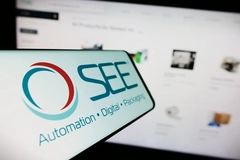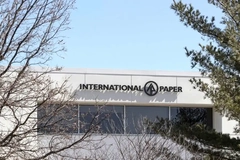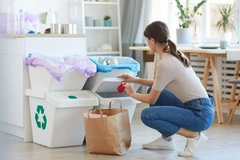Beyond conventional coffee cups: Recyclable vs. reusable debate heats up in hot drinks category

12 Jan 2022 --- The conventional disposable coffee cup might not be as innocent as it first appears. While the thin plastic lining inside the cup holds liquid without leakage, it also renders it unrecyclable.
A UK parliamentary report published in 2018 found 2.5 billion coffee cups are used and thrown away each year in the UK, but less than 1 in 400 is recycled. The Confederation of Paper Industries admitted to the House of Commons Environmental Audit Committee that “paper cups cannot be regarded as generally recyclable.”
As consumer and regulatory pressures for environmentally responsible packaging grow, some packaging industry players are moving beyond convention to the realms of recyclability and reusability without compromising consumer convenience.
PackagingInsights explores the latest trends and solutions in hot drinks packaging with heat-resistant PET specialist Starlinger viscotec, reusable packaging pioneer TerraCycle, and mono-material innovator Huhtamaki.
PET to the rescue
Starlinger viscotec, a division of the Austrian machinery supplier Starlinger & Co, has developed a recycled PET (rPET) material branded rPET100, enabling hot-fill products to achieve full recyclability.
The key challenge, explains Starlinger viscotec’s product manager Stefan Peherstorfer, is combining heat stability and full recyclability in new food-safe packaging since the choice of materials is limited to PET or rPET – a material that is not particularly heat-resistant.  Starlinger viscotec’s rPET100 sheet production.
Starlinger viscotec’s rPET100 sheet production.
“Packaging is truly [environmentally] sustainable if the same product can be made out of it after use. For food packaging, this is only possible with PET and rPET with the current European legislation.”
“Our experience with PET recycling technology was the perfect starting point to develop a packaging material for thermoformed packaging where heat-resistance does not impede full recyclability – rPET100 withstands temperatures of 100 degrees Celsius.”
Thermoforming speed is another challenge rPET100 overcomes with added cost-efficiency benefits since the material can be processed at the same speed as conventional PET.
Carbon competition
An added benefit of recycled plastic is its superior carbon balance versus virgin plastic. An Alpla study found rPET produces 79% lower CO2 emissions than virgin PET. According to Innova Market Insights, planetary health is now global consumers’ top concern, above even personal health priorities.
At the same time, TerraCycle’s reusable packaging platform Loop is working to shift mindsets away from the traditional linear consumption model for more favorable waste management and climate change impacts.
“Based on Loop’s third-party validated Life Cycle Analyses (LCAs), creating a durable (or ‘reusable’) container uses more energy and resources than creating a disposable (or ‘single-use’) container,” accepts Stephen Clarke, head of communications at TerraCycle and Loop Europe.
“However, over time, the reusable container has a lower environmental and economic cost as it does not need to be remanufactured for every use. Instead, it is transported and cleaned, which is a lower environmental cost (across eight different indicators).”
McDonald’s is currently piloting a reusable coffee cup scheme with Loop in the UK to reduce single-use waste to landfills. Although an LCA specific to this trial is yet to be completed, a similar study of shampoo bottles (disposable HDPE versus reusable aluminum) found the reusable option achieved a 35% reduction in environmental impacts after ten uses. McDonald’s is expanding its reusable coffee cup pilot amid positive customer feedback.
McDonald’s is expanding its reusable coffee cup pilot amid positive customer feedback.
McDonald’s expands reusable trial
McDonald’s reusable cups are made from polypropylene (PP) and recycled single-use coffee cups, designed by Circular&Co. The cups include PP as this material is durable and easily cleaned. Meanwhile, the recycled disposable paper cup material is used in the outer insulation layer for a unique look and feel.
For a £1 (US$1.36) deposit, customers can choose to have their hot drink in the reusable cup. As an incentive, participating customers receive a 20p ($US0.27) discount on their purchases.
TerraCycle recycles the cups when they eventually reach their end-of-life, with the resulting material being used to make the next batch of reusable cups.
“Operationally, the trial has been a success, as Loop and McDonald’s have seen significant customer interest – both in platform use and return of the used cups,” notes Clarke. “According to some early insights, the vast majority of the first users said they wanted to keep using the Loop service in the future.”
“As a result, McDonald’s has extended the UK pilot into 2022, and we are hopeful this will be expanded to more UK restaurants in the future,” Clarke tells PackagingInsights.
Masterminding mono-materials
In the hot drinks flexible packaging space, Huhtamaki is driving the category transition to mono-materials for increased recyclability. The Finnish fiber-based specialist has already developed barrier paper for tea envelopes, where a sophisticated barrier is not required. However, for niche products such as medicine or flavored teas, the cost of metalized paper “appears to be a limiting factor,” says Anja Mayr, sales manager beverages for Germany at Huhtamaki.
 Huhtamaki has developed barrier paper for tea envelopes.Meanwhile, mono-material solutions for coffee packs present a bigger R&D headache. “In the coffee segment, customers show high interest in barrier paper, but due to technical restrictions with regards to investing in new machine parts and dead folding of the paper during production, it is currently not possible to replace the existing multi-layer structure,” explains Mayr.
Huhtamaki has developed barrier paper for tea envelopes.Meanwhile, mono-material solutions for coffee packs present a bigger R&D headache. “In the coffee segment, customers show high interest in barrier paper, but due to technical restrictions with regards to investing in new machine parts and dead folding of the paper during production, it is currently not possible to replace the existing multi-layer structure,” explains Mayr.
“Coffee in paper packaging requires new technologies to realize ultra-high barrier papers,” continues Martin Schmölz, senior manager for product development at Huhtamaki. “Instant coffee sachets will realistically be packaged in paper in the medium term. For whole beans in vertical cast pouches, the requirements for seal integrity and barrier performance are very demanding, especially after pouch production, the filling process and the squeezing of the packaging by end consumers.”
Developments are underway with combinations of different coating technologies to solve these challenges, Schmölz adds. The company is targeting a 100% recyclable, compostable or reusable flexible packaging portfolio by 2030 – an ambition fueled by its recently introduced R&D platform for mono-material and advanced barrier coatings called blueloop.
Huhtamaki’s recent successes include the Nescafe Protect ProSlim, reportedly the world’s first recyclable alufoil-free instant coffee stick for “the demanding Thailand market.”
“We see that coffee customers are already working on paper-packaging solutions and these projects keep coming up as high priority ones. In the tea segment, our objective is to replace mixed structures such as MetOPP/Paper or MetOPP/OPP with barrier paper,” summarizes Mayr. Huhtamaki says customers want barrier paper for coffee but technical challenges make replacing multi-layer structures difficult.
Huhtamaki says customers want barrier paper for coffee but technical challenges make replacing multi-layer structures difficult.
Consumer perceptions
While the drive for more environmentally sustainable packaging presents a complex set of challenges, it is clear that consumers are willing to support planetary health with purchasing decisions. According to Innova Market Insights, 50% of global consumers say they would pay more for environmentally sustainable packaging.
The market researcher also found 65% of global consumers would swap their usual brand for a brand with more environmentally responsible packaging, while over half agree (42%) or strongly agree (19%) that a pack’s environmental impact should be illustrated as a score or grade.
“As consumers become even more concerned about packaging’s environmental aspects, trends to minimize environmental impacts and improve overall ‘green’ perception in hot drinks continues to exert pressure on the category value chain,” says Sergey Chaplin, senior marketing manager for flexible packaging at Huhtamaki.
“According to the recent research, consumers, for example, tend to rank metal containers rather low from the environmental perspective, and give high scores to plastic films made from compostable renewed materials or flexible paper.”
Notably, Innova Market Insights reveals most consumers agree (39%) or strongly agree (25%) that making a pack more environmentally sustainable should not reduce its performance.
By Joshua Poole











